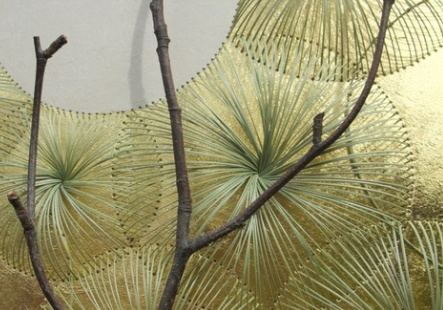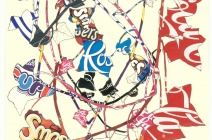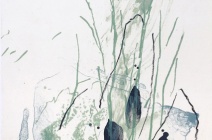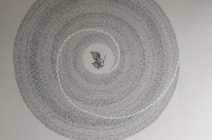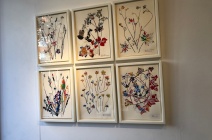A Study in Botany
A Study in Botany
The world of plants examined and re-imagined.
Tracey Bush - Danielle Creenaune - Patricia Swannell - Kazuhito Takadoi
Tracey Bush's work has often dealt with the impact that man makes on the environment. After reading ecological thinkers who note that the average western adult can recognise over 1000 brand names or logos, but fewer than ten local, indigenous plants, Bush started her Nine Wild Plants series. Large-scale, collages drawings interweave a theme of lost knowledge with the rigour of scientific specimens. Bush refers to the herbarium handbook as well as to her own observed drawings to make templates for hand-drawn plant silhouettes; she then collages fragments of found materials illustrating sweet packet, cigarette and fizzy drink logos. The combination of austere black line drawing with the attention-grabbing colours and type styles of brand names and packaging is compelling.
Danielle Creenaune combines inherited and imagined landscapes sourcing imagery from Western Europe and Danielle’s native Australia. As a recurrent concern in Australian art, to address notions of artistic and personal identity through large scale landscape painting, Danielle’s landscapes are atypically intimate such as her large triptych on Japanese hand made paper. Her lithographs have a painterly quality and are graceful and intriguing. She responds intuitively to each landscape and conveys it though a varied language of marks and tone. These prints are rhythmic, which reflects the changing seasons and the movement of water. Danielle describes her work as being about “memory, private connection and sense of belonging.”
Patricia Swannell's detailed portraits of trees materialise the passing of time and give concrete form to ephemeral moments in the natural world. Her works invite to a meditation on time - the time embedded in the environment we inherited and the legacy that we will leave. Each drawing starts with the seed of the tree and matches the current profile and circumference of each tree. At the centre of each work is a seed or cutting from that tree that represents both the starting point of the tree and its future portraying the passage of time with the repetition of each tree’s characteristics – common name, Latin name, location and the date - echoing the endless repetition of seasons through time.
Kazuhito Takadoi's works are a microcosm of the natural world. In Hayashi (Woodland) the grasses, leaves and twigs which he handpicked from his garden are patiently and exquisitely embroidered to portray a forest. As the grasses dry and mature they embark on a subtle colour shift, comparative to seasonal change. Apparently abstract, each piece has a story behind it. Kazuhito Takadoi’s interest in shadows is an important dimension to his grass, wood and twig sculptures, “As the light changes or the point of view is moved, so the shadows will create a new perspective.” Kazuhito trained in Agriculture and Horticulture in Japan the US and in the UK, before studying Art and Garden Design in the UK. His works are in important private and corporate art collections.

